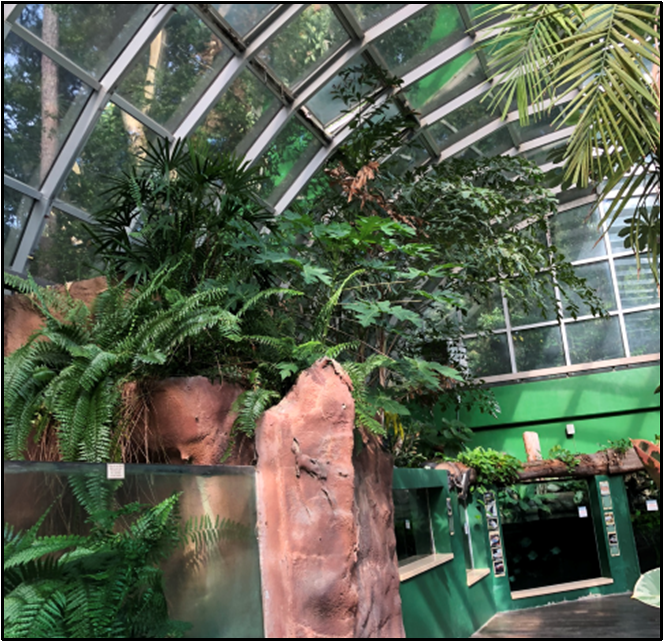Columbia, South Carolina
The Riverbanks Zoo has renovated their old Aquarium Reptile Complex (ARC building). This renovated structure houses an array of animal exhibits showcasing diverse species ranging from local South Carolina wildlife to desert, tropical, and oceanic creatures. Notable examples include the Cotton Mouth Snake, Snapping Turtle, Anaconda, and Mangrove.
The water in these renovated exhibits required specialized treatment systems generally referred to as life support systems (LSS). Each LSS for every exhibit features an innovative design tailored for the recirculation and treatment of exhibit water, ensuring optimal water quality essential for the health of the animals, such as varies snake species, lizards, multi species exhibits, and those residing in tropical and subtropical environments.
SE&A for the undertaking, introduced two distinct types of LSS: “Exhibit Type A” and “Exhibit Type B.” Exhibit Type A systems encompass filtration, disinfection, and temperature control, while Exhibit Type B systems integrate bag filtration, protein skimming, bio-filtration/deaeration, ultraviolet (UV) disinfection, and temperature control. The systems were developed to allow husbandry flexibility and to remotely treat water within the reptile enclosure.
The development of LSS design criteria and processes for each exhibit is intricately tied to achieving the desired water quality for underwater viewing. Factors such as water volume, tank configuration, environmental influences, food loadings, and the specific characteristics of the animal species housed in each exhibit play a crucial role in determining the optimal design for the life support system. See Photo Page

